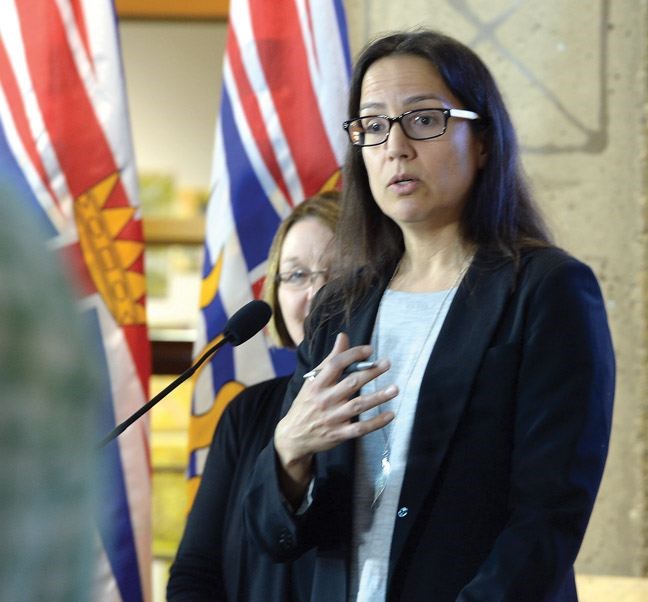The north is joining leading health researchers by launching its own biobank.
By collecting tissue and blood samples from northern populations, the hope is that researchers can offer more personalized and targeted treatments.
Bringing a biobank north means keeping pace with the technology and treatments available to other British Columbians. Such biobanks exist in Vancouver, but with a base in the Prince George, it opens access to northern populations and demographics which can differ greatly from other regions.
Dr. Nadine Caron has been working on the idea for years and will be leading Phase 2 of the project, announced Monday at the University of Northern B.C. The first phase of the Northern Biobank Initiative involved several years of consultations with various partner groups and populations.
Under the microscope, two tumours of the same disease can still be "fundamentally different."
"Population can play a role in that whether it's ethnic background, whether it's diet, whether it's environmental toxins, all of that can play a role in it. The question is how much," Caron explained. "The north has been vastly isolated from that ability to even know."
Caron, also an associate professor with the UBC department of surgery, said as researchers, they had two choices.
"We could wait," she said, like the north waited for its cancer clinic, its medical program and more. "Or we could actually go with the flow, ride the wave, be one of those leaders. We could create our own research questions up here for our people, with our people, and answer them."
The project has $1.25 million in funding, divided in five equal parts from Genome British Columbia, Northern Health, the First Nations Health Authority, Provincial Health Services Authority and the B.C. Cancer Foundation. It will join Genome B.C.'s existing project - the User Partner Program.
Genome BC said it had some 30,000 samples, of which the north only accounts for about 2,000.
It's impossible to make evidence-based projections with that scarcity of information, which is why the partners each said a northern-based bank could lead to better health outcomes.
"We have to hope a solution fits," said Caron of the current situation, using data collected from urban and southern individuals.
Sonia Isaac-Mann said the First Nations Health Authority continues to hear stories of its members who can't benefit from "life-saving techniques... because there simply aren't enough First Nations in those biobanks or in those databases and they can't find a match."
"Our people should benefit from the same life-saving advances," said Isaac-Mann, who is the executive director of community health and wellness services with FNHA. "We do know that we have a dark history with research as First Nations people. We don't have one common experience but we do share an experience with data and information and research.
She called it the "new frontier" in personalizing care research, a sentiment echoed by MLA Shirley Bond.
"Researchers at the biobank recognize that our rural and aboriginal communities have specific health characteristics that differ from those of urban residents and can use the biobank to support their research efforts," said Bond, who was at the announcement on behalf of health minister Terry Lake.
"This project will help deliver personalized and targeted treatments for residents in the north," Bond said."
This two-year phase will involve collecting existing samples - or what Caron calls a "retrospective biobank." The focus will be on breast cancer tissue samples and it'll be the largest bank to date of breast cancer samples, if all goes well.
The third phase will widen the scope to include new patients who have agreed to take part.



